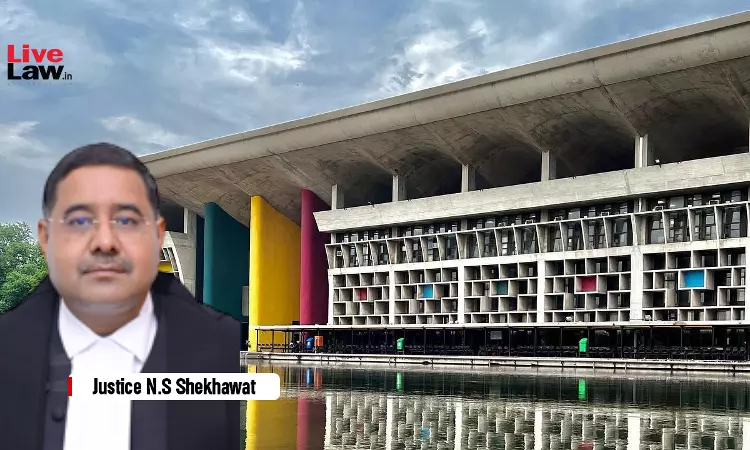- Home
- /
- High Courts
- /
- Punjab and Haryana High Court
- /
- CBFC Ensures Freedom Of Expression,...
CBFC Ensures Freedom Of Expression, Guarantees That Movie Is Fit For Public: P&H High Court Quashes FIR Against Producer Of 'Shooter' Film
Aiman J. Chishti
14 May 2025 9:25 PM IST
The Punjab & Haryana High Court has quashed an FIR lodged against the producer of movie "Shooter" for allegedly inciting youth to participate in armed activities, which were likely to affect public peace and harmony adversely.The FIR was lodged under Section 153 (Wantonly giving provocation with intent to cause riot), 153-A (Promoting enmity between different groups), 153-B...
The Punjab & Haryana High Court has quashed an FIR lodged against the producer of movie "Shooter" for allegedly inciting youth to participate in armed activities, which were likely to affect public peace and harmony adversely.
The FIR was lodged under Section 153 (Wantonly giving provocation with intent to cause riot), 153-A (Promoting enmity between different groups), 153-B (Imputations, assertions prejudicial to national integration), 160 (Affray), 107 (Abetment) and 505 (Statements conducing public mischief) IPC.
Justice N.S. Shekhawat said, "the law is well settled that the certification issued by the CBFC, i.e., statutory body, guarantees that movie in question satisfies the requirement of law and may be exhibited for the public watching."
Referring to the Cinematograph Act 1952, the Court said that it provides a specific mode for certification of movies with a complete and full proof mechanism to ensure that the depictions made therein are not found offending the feelings of anyone and are in conformity to the “freedom of expression” guaranteed under Article 19 of the Constitution of India.
"The law is well settled that the CBFC is the only statutory authority, which could examine the contents of a movie to find out whether the same could be released for public viewing or not. Once the certification...had been accorded as per the provisions of Cinematograph Act, 1952, it had to be presumed that the contents of the movie satisfy four-corners of law," it added.
Further the Court said that, the statute itself provides the remedy of appeal and judicial review and any person can avail his remedy in accordance with law. In the present case, admittedly, neither the State of Punjab nor any other individual had challenged.
On a reading of the provisions of Sections in the FIR, the Court found that no offence under those sections is made out against the movie producer.
The Court also pointed that the FIR admittedly was registered on the basis of a trailer and the complainant had lodged the FIR, "without even watching the movie and seeing the offending contents of the movie. "
"The movie in question does not promote enmity between different groups on the ground of religion, race, place of birth, residence as well as language etc., or which could prejudice the maintenance of harmony between various groups," the Court observed.
The petitioner, Keval Singh @ KV Dhillon was a professional film producer, who had produced a film titled as “Shooter”, which is the center of controversy in the present case.
The FIR was lodged with the broad allegations that the film portrays the life and criminal undertakings of an infamous gangster, namely, Sukha Kahlwan, and has been accused of promoting violence, heinous crimes, extortion, threats and criminal intimidation.
After hearing the submissions, the Court observed that the common ingredient in both the offences is promoting feeling of enmity, hatred or ill-will between different religious or racial or linguistic or regional groups or castes or communities. Section 153A covers a case where a person by "words, either spoken or written, or by signs or by visible representations" promotes or attempts to promote such feeling.
Under Section 505(2), promotion of such feeling should have been done by making and publishing or circulating any statement or report containing rumour or alarming news.
Justice Shekhawat highlighted that, "The main distinction between the two offences is that publication of the word or representation is not necessary under the former, such publication is sine qua non under Section 505."
The Court emphasised that, the words "whoever makes, publishes or circulates" used in the setting of Section 505(2) cannot be interpreted disjunctively but only as supplementary to each other.
"If it is construed disjunctively, any one who makes a statement falling within the meaning of Section 505 would, without publication or circulation, be liable to conviction. But the same is the effect with Section 153A also and then that Section would have been bad for redundancy," it added.
The Court further said that, the intention of the legislature in providing two different sections on the same subject would have been to cover two different fields of similar colour.
In the present case, the Court said, the petitioner who has not done anything as against any religious, racial or linguistic or regional group or community cannot be held guilty of either the offence under Section 153A or under Section 505(2) of IPC.
Furthermore, the bench opined that there was nothing on record to suggest that the FIR was registered as a result of an affray between two or more persons. Still further, the ingredients of Section 505 IPC were completely missing in the instant case.
The Court also said that, a prosecution has miserably failed to show that any statement made by any character in the movie could lead to public mischief or any statement promoted enmity, hatred or ill-will between classes or offence was committed in a place of worship etc.
In the light of the above, the Court quashed the FIR.
Mr. Harparteek Singh Sandhu, Advocate for the petitioner.
Mr. Deepinder Singh Brar, Sr. DAG, Punjab.
Title: Keval Singh @ KV Dillon v. State of Punjab
Click here to read/download the order



